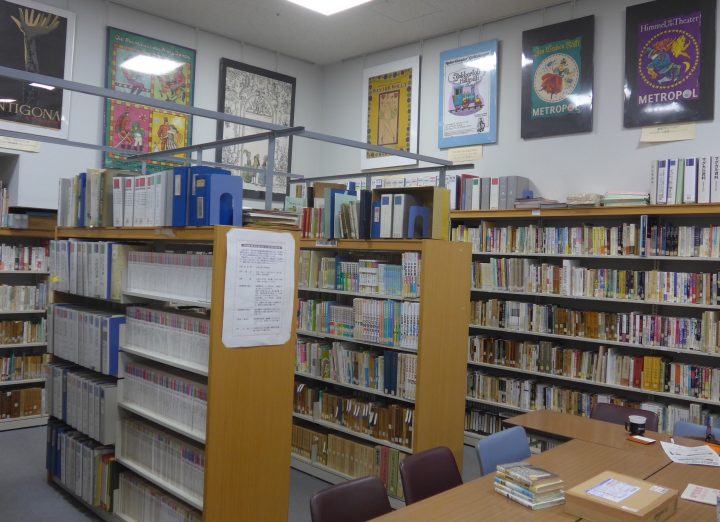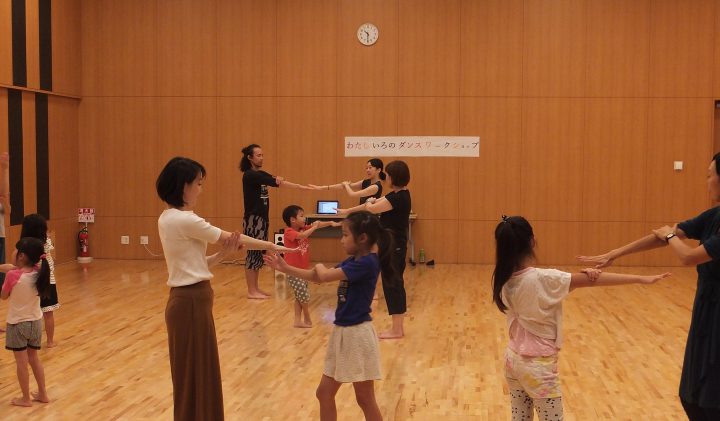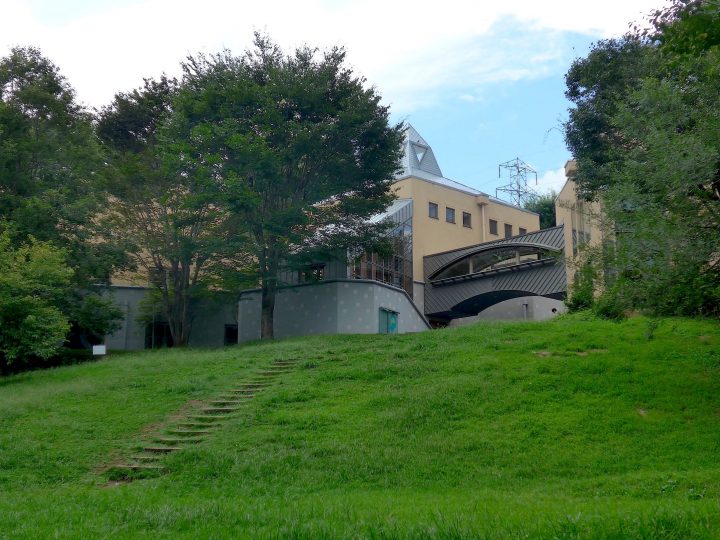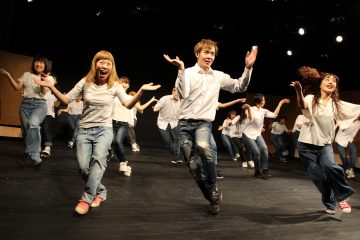"Dream Play" by Kaiji Moriyama and Reo Tamaki
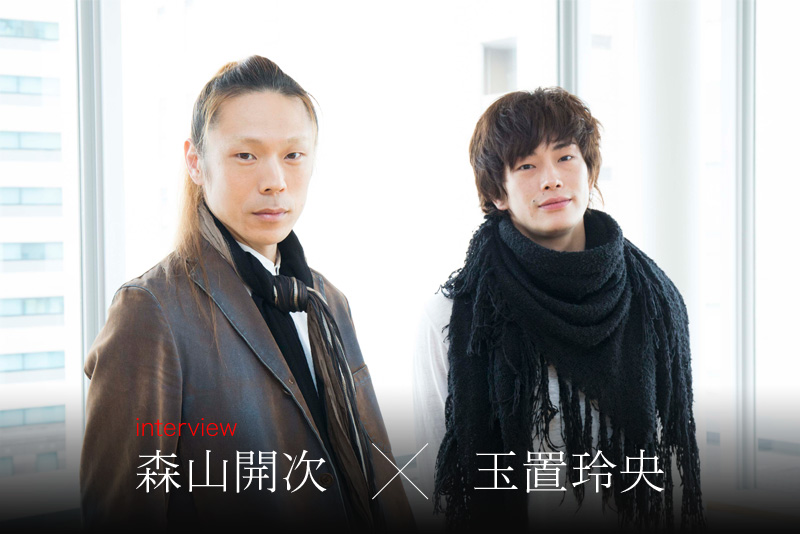
Swedish playwright Strindberg lived a turbulent life, with his vast knowledge and rebellious spirit. His play "Dream Play," which he wrote freely without thinking of performing, will be directed by Akira Shirai, who became artistic director of KAAT (Kanagawa Arts Theatre) this April. The story depicts the pain and joy of human life through the daughter of a god who descends to the human world and experiences various things while traveling through time and space. We spoke to Kaiji Moriyama, who will be performing and choreographing the play, and Reo Tamaki, who is attracting attention for his role as Oda Nobutada in the historical drama "Sanadamaru," which is also attracting attention for its luxurious cast, including Akari Hayami, Kei Tanaka, and Keiichi Nagatsuka.
Interview & Text: Kyoko Tokunaga Photo (Portrait): Masamasa Nishino
One answer is that dreams are "images of humans"
── I personally love the worldview of this play, but it's quite difficult to explain. I imagine it must be difficult for everyone being interviewed like this (laughs).
Moriyama : That's right. We're exactly the same. We like the worldview, but the explanation is... (laughs).
At Tamaki Practice, we are currently exploring how to give shape to this "difficult to explain" quality.
-- There are two ways to portray people: from a close distance, picking up the subtle breathing and changes in facial expression of individuals, or capturing the changes in the movements of a group from a distance. This work uses the latter method, and what's more, the viewpoint moves freely. It's as if you're watching from high up in the sky, then suddenly descend into a house, and then run back up the mountain.
Moriyama : It's a play that hasn't been performed much in Japan, or even overseas. Moreover, Shirai's direction involves a small number of directors playing many characters, so instead of each person playing one role, we all play many different roles. Our roles change from moment to moment, scene to scene. The boundaries between them are still...
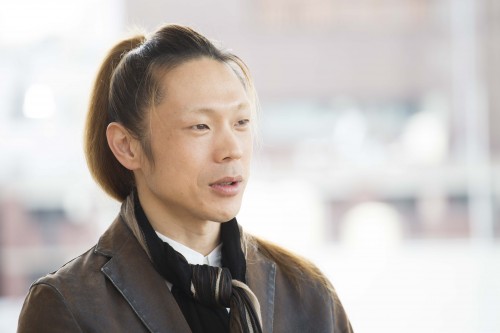
Tamaki : Yes, it was a question of how to balance the role I had just played with the next role (laughs).
Moriyama : I think the audience will be confused. It's only natural to be confused. Reo-kun plays a young officer all the time, and at one point he is replaced by Yamazaki Hajime, who plays an older officer, but right after he switches places, he appears in a different role (laughs).
Tamaki : Haha, I'm doing it while thinking it's a mystery.
Moriyama : I thought it would be good if we could create something that customers could enjoy as well.
Tamaki : That's right. I'm sure there are times when you're watching and you think, "Who is this person? What is he doing?" When that happens, you don't just end up complaining, "I don't get it," but you can put it into words in a simple way,
I would like to create a fun feeling that makes people say, "I don't understand it, but it's kind of interesting."
Moriyama : It may sound like an escape route, but it's a "dream play." Anything can happen in a dream. Just when you think your sister appears, she suddenly becomes someone you've never met, or the scene suddenly skips. In that sense, it's a "dream play," and when you think about what dreams are, I think this play gives us the answer that they are ultimately depictions of human beings.
-- It's true that there is a light, floating feeling like in a dream, but there are also many definitional statements such as "humans are sad beings" and "life is full of hardships." That said, it's not that serious. I think the balance between lightness and heaviness is what makes this work so fascinating.
Moriyama : That's right. What I learned from rehearsals is that even if lines like "sad" or "painful" appear, that doesn't mean exactly what they mean. Don't you ever think that this isn't a sad story at all?
Tamaki: I do it , I do it a lot! The issues that come up are quite personal, like love and marriage.
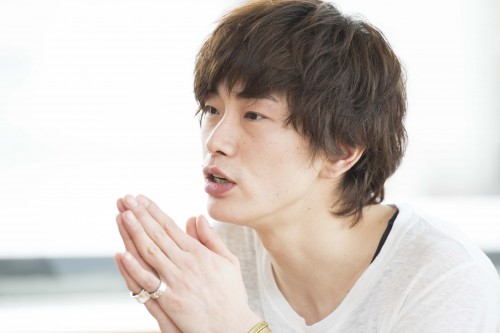
Moriyama: I know I say this, but there are a lot of petty complaints, aren't there? (laughs) But humans tend to say pessimistic things to convince themselves, and even when Agnes, played by Hayami, seriously cries out, "How foolish humans are," it's actually a problem that is very close to home. On the other hand, even if something seems tragic, it could actually be solved...
There are a lot of Tamakis in life.
Moriyama : That's the kind of play it is (laughs). Theater is a genre that is relatively easy to take up social issues and historical matters, and it is possible to really appeal to the idea that "humans are foolish" through such themes, but this work does not do that. Humans are foolish and ugly beings that cause trouble over small things, but on the contrary, they affirm the fact that they are alive. Such things are depicted with a nice fluffy feeling, a dreamlike feeling.
In that sense, as Mr. Shirai and Mr. Nagatsuka said, it is a work that praises humanity.
── Agnes, the daughter of God, may be the most human of all. This is Hayami's stage debut, isn't it?
Even though his name is Moriyama , he has been on stage many times and is very confident.
Tamaki: I play a character who spends a lot of time with Agnes, but I don't know what it's like for her to be facing off against Akari, but I don't feel like I'm playing with someone who's making their debut. She's very relaxed and innocent in the rehearsal room, and I'm not worried about her performance.
Moriyama : We often talked about how Agnes's experiences in the human world could be expressed as her galloping through it like a white horse. In that sense, I think she is a perfect fit for the role.
-- It is said that Strindberg wrote this play freely without any consideration of it being performed, and in fact, the stage directions are like magical instructions (laughs).

Photo: From the public rehearsal of "Dream Play"
Tamaki : "Can you do it?" (laughs) Or simply, "The spirits are dancing."
Moriyama Shirai said it simply again, "Right now, the spirits are dancing in the sky..." (laughs). As a choreographer, I'm also in the rehearsal room, so I think about how to get the dance team to move and what to express, but it's "in the sky..." (laughs). I've had pole dancers join in, keeping in mind the height, but even poles can't go that high, and once you climb up you have to get down, and you can't fly. I'm struggling with the stage directions, worrying. However, when dance appears in a play, it tends to become just an add-on, so my challenge this time is to avoid that. I want to be able to mix the (theatrical) meaning of spirits flying in the sky with the expression of dance well.
I want this piece to erase the boundaries between dance and acting.
Do the actors also dance?
Tamaki is dancing.
Especially Moriyama Reo.
Tamaki: I'm grateful to have the opportunity to dance in a variety of different ways .
Moriyama, you're saved.
Tamaki : I'm happy too. I'm from the generation that watched Shirai-san and Nagatsuka-san's stage performances, as well as Kaiji-san's dance from the audience, so it's an honor just to be involved in the same work together, but I'm also honored to have him choreograph for me directly. I'm glad I've done all the dance (laughs).
Moriyama: You also did swimming, right?
Tamaki was involved in swimming and track and field.
Because it's Moriyama , his body is very strong. He can be relied on.
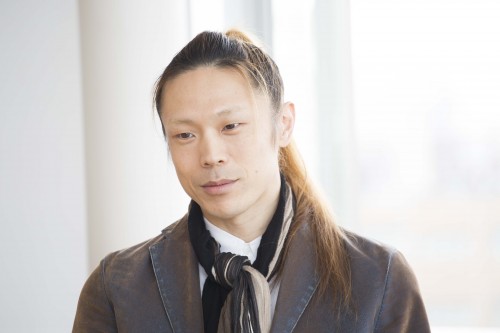
Tamaki: No, no, it's scary, but I'll do my best.
── If the actors also dance, does that mean the dancers also perform?
Moriyama : Yes. Originally, what Shirai and I want to do is to eliminate or blur the boundary between dance parts and acting parts, which have tended to be separate up until now, in this work. Just like the problem I mentioned at the beginning about how Reo and I bridge the gap between roles, we want to bridge the gap between dance and acting. So, I would like to create time for the actors to express themselves with their bodies, and for the dancers to express themselves with words. All the dancers are given a little bit of lines, and some of them have quite a lot of lines, so we're saying that we'll challenge ourselves to do that.
Tamaki: Can I ask Kaiji -san a question? I've always wondered, but you have a certain amount of discussion with Shirai-san before choreographing, right? But you were able to do it to a certain extent from the beginning of rehearsals, weren't you? I was really curious about where that dance was derived from. There is a script, you have a meeting, the dancers move in the rehearsal room, and the choreography is created. That whole process seems really mysterious to me.
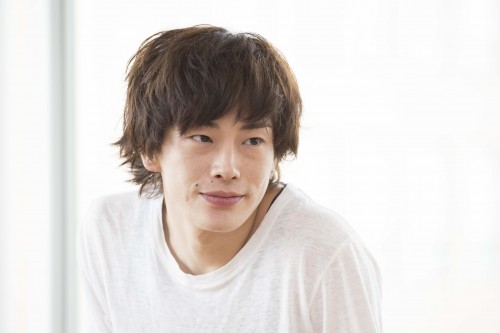
No matter how many meetings you have beforehand, you don't really know how to create Moriyama Shirai's plays until you start practicing. In those cases, I'll go ahead and stock up on a little bit of movement. At the same time, I also want to understand the dancers. Because some people don't know how well they can dance or what they're good at. So, I first work on combining the director's taste and the dancers' abilities. And actually, I'm the type of person who takes a long time to choreograph. I want to spend days on one scene. But this time I can't do that, so I think there's a kind of accidental guidance, like picking up what works when I actually move. I don't know the details myself (laughs). For example, when I do a certain movement, the next movement sometimes comes naturally, and when I have a big image (for this work), but the dancers have to move on a slope for the transition, the choreography is unexpectedly born from that concrete constraint.
Tamaki : Ah, that's certainly true.
Moriyama : (The set changeover movement) is heavy, so a man has to do it. That's the situation. Then, dancers alone won't be enough, so they say, "Sorry, Reo, please." And then you think, "Yeah, if you're asking someone else, I don't want to do it, but I'll do it too" (laughs). Then, when I decided to dance on the floor with my body that had moved, I suddenly had the possibility of creating a landscape with dance. To put it coolly, it felt like the choreography came to me.
Tamakioh !
Moriyama: Realistically speaking, it just happened that way. I think about it a lot in my head beforehand, but in the end it doesn't go that way, I've never tried it before (laughs). It would be nice if I could have fun doing that. Shirai's direction also deliberately left it alone, saying "If you move it another 10 centimeters, it will fit perfectly and it will look beautiful," and said, "That difference is important, that subtle difference is good" (laughs). I hope that everything will go according to plan with that kind of strict count, leaving room for error, and choreographing well. So, not separating dance and acting rehearsals, and although it takes time, creating them in the same place at the same time is important, and I think that's what's interesting about this project.
Thank you Tamaki , I totally agree with that.
── You mentioned that while you were conscious of movements at high altitudes, the choreography was born from the change of the set. I felt that this was in sync with the structure of this work, which is somewhat like a dream world but is also connected to the roots of human life. I'm looking forward to seeing it in action.

Photo: From the public rehearsal of "Dream Play"
